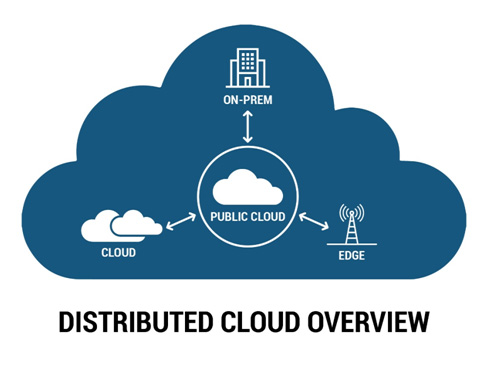Technological advancements are on top of the priority lists for every organization in this decade. And like most of us already know, the sudden rise in the use of technology is a result of the pandemic which led to rapid growth in service providers. Taking this lead, technologies like AI and ML also made revolutions which further led to an increased amount of data generation. Now, to access large amounts of data in real-time is why we need efficient data centers and solutions.

According to Gartner’s research and estimates, around 50% of enterprise-generated data is predicted to be produced and processed outside traditional data centers or a single centralized cloud by 2022, as compared to just 10% in 2020. In fact, by 2025, they forecasted that the number will climb as high as 75-90%.
So, while most enterprises still rely on traditional data centers, cloud trends are improving to accommodate changing business requirements. Enterprises have already begun using combinations of private and public cloud computing services which has in turn given rise to the demand for Hybrid cloud. But these are temporary solutions and soon IT departments will need a more comprehensive plan to efficiently address the growing data. This is where ‘Distributed Cloud Computing’ will present itself as an effective solution. It is our next generation cloud computing.
Must Read: How Does Digital Integration Power Mainframes?
What is Distributed Cloud Computing?
Distributed cloud computing is utilized to interconnect information and applications that are served from different geological locations. It is a public cloud computing service that lets you run public cloud infrastructure in multiple locations like on-premises, in other cloud providers’ data centers, or in third-party data centers or colocation centers and not only on your cloud provider’s infrastructure. And surprisingly, it manages everything from a single control plane.
In simpler terms, the distributed cloud enables a geographically distributed, centrally managed distribution of public cloud services optimized for performance, compliance, and edge computing. It is the first cloud model that incorporates the physical location of cloud-delivered services as part of its definition because historically speaking, location has not been relevant to cloud computing definitions. In fact, location has been explicitly abstracted away from the service, which inspired the term “cloud computing” in the first place.
Also Read: The Future of SaaS
How Does Distributed Cloud Computing Work?
Distributed computing comprises of spreading application components across different networked computers and communicating with one another through messaging or APIs, with the goal to improve overall application performance and maximize computing efficiency.
Distributed cloud distributes a public cloud provider’s entire compute stack to wherever a customer might need it, whether on-premises in the customer’s own data center or on a private cloud, or off-premises in one or more public cloud data centers that may or may not belong to the cloud provider.
Distributed cloud extends the provider’s centralized cloud with geographically distributed micro-cloud satellites from where the cloud provider retains central control over operations, updates, governance, security and reliability of all distributed infrastructure. The customer then has access to everything, the centralized cloud services, and the satellites wherever they are located, as a single cloud and manages it all from a single control plane.
That said, low latency applications and regulatory compliance are a few issues for conventional centralized infrastructure but distributed systems in cloud computing mitigate those downsides by properly distributing the workload.
You Might Also Like: What is Confidential Computing?
Advantages of Distributed Cloud Computing
– Cost Efficient, Scalable, and Agile.
– Quick Analysis for Real-time Requirements.
– Allows Redundancy and Proximity to Data, in case of emergencies.
– Affordable and High-performing Infrastructure as compared to extremely expensive mainframes.
– Enables Local Processing, thus – Better Bandwidth and Lower Latency.
– Data Security is Better as compared to centralized data processing approach.
– Increased Compliance with Regulatory Requirements as data will be closer and more specific to the consumer location.
Disadvantages of Distributed Cloud Computing
– Security can be a concern as data transferring from public networks will be vulnerable to hackers.
– Erros at hardware and software levels are most likely to occur as the infrastructure with distributed cloud has more interfaces.
– Troubleshooting will be difficult due to the complexity of the infrastructure.
Recommended Read: What is Hadoop Technology?
For more articles like “Distributed Cloud Computing: Its Challenges and Opportunities”, follow us on Facebook, Twitter, and LinkedIn.